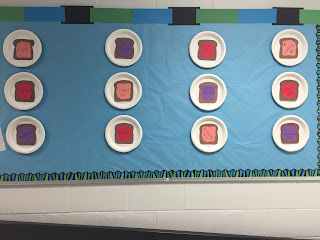Over the years, I have really embraced the concept of Simple Play - using everyday objects and a bit of imagination to create engaging lessons in movement and music. One of my favorites has become a simple piece of paper. What started out as a simple folding activity has grown into imaginative play, creative movement and found sound performances.
Paper Play #1: Found Sounds
In 2012, I was presenting a session at the St. Louis national conference. The focus of the session was on using little pieces from the Music for Children volumes as resource material for new lessons. The culminating piece was a take on the very well know "Ding Dong Diggidiggidong" from Volume One. Using its sixteen beats as a rhythmic framework, participants were encouraged to created rhythmic variations using found objects: the conference notebooks, chairs, etc. Inevitably, a group was given a bunch of paper and explored its many sound qualities. It was always enjoyable to hear the nuances of ripping, crumpling, tapping, blowing and other sounds the groups found within a simple piece of paper.
Paper Play #2: Imaginative Play
Over several years, I have developed a sequence of activities to accompany the song "Who Has the Penny?" with my first graders. Each object of the singing game (penny, key, paperclip) is given its own special day. On Paperclip Day, I admit that I don't really have a paperclip song, but a paperclip's job is to hold papers together, so.....it's Paper Day! After learning the song above, I teach students how to accordion fold a piece of paper. Many of them already know this as fan folding, but being the music teacher, I prefer my term. As students finish their folding, I ask them to imagine the many items that piece of paper can become and we perform corresponding beat motions as we sing the song (e.g. play the accordion, fan yourself, etc.). Here are just a few of their ideas:
bow tie, hair bow guitar, trumpet
mustache broom
accordion, xylophone window blinds
stairs
fan hat
beard triangle
ice cream cone dust pan
bow tie, hair bow guitar, trumpet
mustache broom
accordion, xylophone window blinds
stairs
Paper Play #3: Movement
A simple piece of paper can be used to get students to explore creative movement and isolate certain parts of the body. Just imagine students copying the bending, folding and twisting of a piece of paper. I usually take them through a sequence of movements in a stand position - jumping, hopping, turning around, moving one then both arms, twisting at the waist - before lightly folding the paper into a "sitting" position. After a few seated poses (legs stretched out, lying down, criss cross), I crumple the paper into a ball. After the initial freakout (!), I guide them through gradually unfolding themselves by pulling part by part of the crumpled ball out (e.g. "Oh look, one elbow popped out.") until they are back in whatever position is needed for the next activity. Once students experience these possibilities as a whole group, it is fun to have them work in pairs or small groups with one student conducting the movements of the others.



















